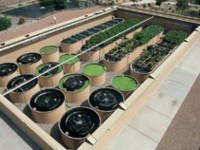Green Water is Better Water
 The nation’s clean water and public health and safety would be much better off with a water infrastructure system that incorporates green solutions, according to a new report by the Aspen Institute, “Sustainable Water Systems: Step One - Redefining the Nation’s Infrastructure Challenge.”
The nation’s clean water and public health and safety would be much better off with a water infrastructure system that incorporates green solutions, according to a new report by the Aspen Institute, “Sustainable Water Systems: Step One - Redefining the Nation’s Infrastructure Challenge.”Specifically, the report recommends integrating natural and built water infrastructure, protecting watersheds, and prioritizing federal funding for activities including green infrastructure, climate change adaptation, and research and development. Report recommendations include:
- Redefining water infrastructure to integrate built infrastructure with protection and restoration of the natural water infrastructure;
- Working to remove barriers to water management to allow federal, state, and local governments to address all sources of pollution, degradation, and depletion; and
- Targeting federal investment toward important 21st century priorities including green infrastructure, water and energy efficiency, climate change adaptation, research, and demonstration of integrated water management, and targeted assistance to economically distressed households.
“For many, the word infrastructure brings to mind wastewater and drinking water treatment plants, dams, and massive underground tunnels,” said Katherine Baer, senior director for the clean water program at American Rivers.
“We need to broaden the definition to include natural infrastructure – healthy rivers, small streams, wetlands, and floodplains that are often more reliable and cost-effective at providing clean drinking water and natural flood protection. We need to integrate green solutions if we are going to bring our water infrastructure into the 21st century.”
American Rivers promotes green infrastructure and water efficiency, along with other smart solutions, as the most cost-effective, reliable, and flexible way for communities to deal with the impacts of climate change and provide a wide array of valuable benefits to people and wildlife.
Green infrastructure approaches to clean water management include:
- Using rooftop vegetation to control stormwater and reduce energy use,
restoring wetlands to retain floodwater, - Installing permeable pavement to mimic the way water should naturally flow over the land, and
- Using potable water more efficiently.
Such smart infrastructure approaches save money, reduce stormwater runoff, sewage overflows, and energy use, recharge drinking water supplies, and create appealing natural areas for community enjoyment. Moreover, they can work at all scales - from the home to the neighborhood to the regional level.
“Clean water is the lifeblood of our communities, yet our nation’s water infrastructure is seriously outdated and climate change is making the situation worse. This report is a great reminder that practical, cost-effective solutions exist now and we must work to implement them,” said Baer
The full report is available on-line and provides a number of useful recommendations for municipal wastewater treatment operators.
Pictured above is an Eco-MachineTM, a tank based system traditionally housed within a greenhouse or a combination of exterior constructed wetlands with Aquatic Cells inside of a greenhouse designed by Dr. John Todd, an internationally recognized inventor and a pioneer in the design and construction of ecological wastewater treatment systems.
You can return to the main Market News page, or press the Back button on your browser.

